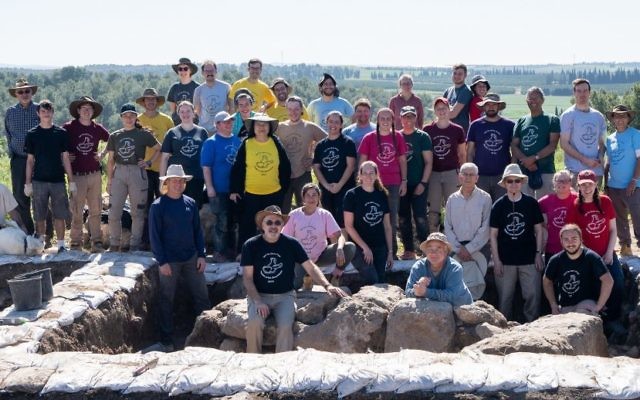Uncovering a lost biblical city
MACQUARIE University students recently discovered the potential location of a lost town called Ziklag, in an excavation with students from the Hebrew University of Jerusalem.

MACQUARIE University students in the Ancient Israel Program, run by Macquarie University’s director of the program for Ancient Mediterranean Studies, Dr Gil Davis, recently discovered the potential location of a lost town called Ziklag, in an excavation with students from the Hebrew University of Jerusalem (HUJI).
According to the biblical account in 1 Samuel 17, Ziklag was given to King David when he was a mercenary for the Philistine King Achish of Gath, but the town’s whereabouts has, until now, remained unknown.
Digging at the site of Khirbet el-Rai, situated at the western end of the Shephelah hills near the Judaean Mountains, the students, under the direction of Professor Yossi Garfinkel from HUJI, Dr Kyle Keimer from Macquarie University, and Saar Ganor of the Israel Antiquities Authority, uncovered monumental architecture, Philistine and Canaanite pottery, flint materials used for the preparation of sickle blades, a portable shrine and a bronze spear.
Davis commented, “The site is tremendously important because its occupation bridges the gap between the hitherto dominant Bronze Age city of Lachish in the late 12th century BCE and the fortified Iron Age city of Khirbet Qeiyafa, controversially identified by Professor Garfinkel as ‘David’s City’ and dating to the early 10th century BCE … The Early Iron Age 1 period is poorly known and was previously thought to only contain modest villages in this region, so the discovery of large courtyard-style houses with abundant finds forces a new understanding.”
The town’s location near Gath and the discovery of more Philistine material strengthens the identification of the site as Ziklag.
The previously suggested sites did not have Philistine levels, and/or did not have a level from the early 10th century BCE. Khirbet el-Rai is the only site that has both.
In another major innovation, the team established an on-site chemistry laboratory run by postdoctoral researcher Dr Sophia Aharonovich, who was looking for organic remains and trained the students in sampling for residue analysis.
The site was professionally photographed and filmed for photogrammetry and teaching into Macquarie’s Ancient Israel Schools Outreach Program.
The excavations were generously funded by the Roth families, the chemistry lab by Isaac Wakil in honour of his late wife Susan, and the Australian Friends of the Hebrew University and Macquarie University’s PACE program provided scholarships for students to attend.
AJN STAFF

comments